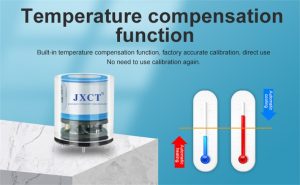Air pollution is a global environmental concern that affects the health and well-being of millions of people worldwide. With the rise in industrialization, urbanization, and vehicular emissions, monitoring air quality has become increasingly important. Gas sensors have emerged as revolutionary tools in detecting and measuring air pollutants, enabling real-time monitoring, data collection, and targeted interventions. This article explores the significant impact of gas sensors on air pollution detection and their role in creating a healthier, sustainable future.
Understanding Gas Sensors: Gas sensors are devices designed to detect and measure the presence and concentration of specific gases in the air. They employ various technologies like electrochemical, photochemical, and semiconductor-based techniques to accurately and rapidly analyze air quality data. Typical pollutants measured include carbon monoxide (CO), nitrogen dioxide (NO2), ozone (O3), sulfur dioxide (SO2), particulate matter (PM), and volatile organic compounds (VOCs). Gas sensors are essential tools for assessing air quality, identifying pollution sources, and evaluating the effectiveness of pollution control measures.
Real-time Monitoring and Data Collection: One of the most significant advantages of gas sensors is their ability to provide real-time monitoring of air pollutants. Unlike traditional methods that involve periodic sampling and laboratory analysis, gas sensors offer instant data on pollutant levels. This capability allows for timely response to changing air quality conditions and prompt implementation of mitigation measures. Real-time monitoring ensures that authorities can promptly address sudden pollution events like industrial accidents or wildfires, minimizing their impact on public health.
Identifying Pollution Sources and Patterns: Gas sensors play a crucial role in identifying pollution sources and patterns in urban areas. By continuously measuring pollutant concentrations at multiple locations, these sensors can pinpoint pollution hotspots and identify the primary sources of emissions. For example, elevated levels of nitrogen dioxide near roadways may indicate high vehicular emissions, while increased particulate matter concentrations in industrial areas may suggest industrial pollution sources. Understanding pollution sources and patterns enables policymakers to implement targeted measures to reduce emissions, improve air quality, and protect public health.
Air Quality Index Calculation: Gas sensors contribute significantly to the calculation of the Air Quality Index (AQI), which provides an assessment of air quality and potential health effects. By measuring pollutant concentrations, gas sensors supply the data needed for accurate AQI calculations. The AQI categorizes air quality into different levels, ranging from good to hazardous, enabling authorities to issue health alerts and advisories. This information empowers individuals to take necessary precautions, such as reducing outdoor activities or wearing respiratory protection, to minimize health risks associated with poor air quality.
Early Warning Systems and Mitigation Measures: Gas sensors are instrumental in establishing early warning systems for detecting sudden increases in pollutant levels. These sensors continuously monitor air quality and can detect spikes in pollutant concentrations even before they exceed official air quality standards. Early warning systems allow authorities to take immediate mitigation measures, such as implementing traffic restrictions, adjusting industrial emissions, or activating emergency response plans. Proactive measures based on early warnings can effectively control pollution episodes and prevent adverse health effects among vulnerable populations.
Improving Urban Planning and Design: Gas sensors provide valuable insights for urban planning and design strategies aimed at improving air quality. By providing real-time and location-specific data on pollutant concentrations, these sensors help identify areas with poor air quality and prioritize interventions. For instance, gas sensor data can inform decisions regarding the placement of green spaces, pedestrian zones, and bike lanes, promoting non-polluting modes of transport and reducing vehicular emissions. Integrating air quality monitoring into urban planning efforts is crucial for creating healthier, more sustainable cities for residents.
Public Awareness and Citizen Engagement: Gas sensors have the potential to raise public awareness and foster citizen engagement in air quality monitoring. By providing real-time data on pollutant levels, these sensors enable individuals to make informed decisions about their daily activities and take necessary precautions to protect their health. Citizen science initiatives involving individuals, schools, and community groups have gained momentum in air quality monitoring. Portable gas sensors allow citizens to collect data in their neighborhoods, fostering a sense of community ownership and active involvement in improving air quality. These initiatives not only generate valuable data but also empower communities to advocate for cleaner air and participate in pollution control measures.
Conclusion: Gas sensors have revolutionized air pollution detection by enabling real-time monitoring, data collection, and targeted interventions. They play a crucial role in identifying pollution sources, patterns, and trends, guiding interventions and urban planning strategies. Gas sensors contribute to the calculation of the Air Quality Index, facilitating the issuance of health alerts and advisories. Furthermore, they promote public awareness and citizen engagement, empowering individuals and communities to actively contribute to air quality improvement. As technology advances, gas sensors will continue to be indispensable tools in combating air pollution and creating a healthier, more sustainable future for all.
 : +86 155 8830 2704
: +86 155 8830 2704 : jxdziot@gmail.com
: jxdziot@gmail.com
